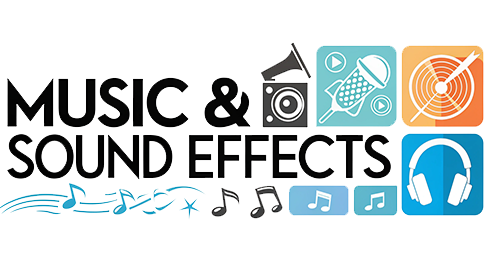May be interested
Title: Samples and Loops: Building Blocks of Your Sonic Masterpiece – Unveiling the Secrets of Sound Design
Description: Unleash your sonic potential: samples and loops – the magic of creativity. From idea to masterpiece: how samples and loops help create unique music and sound design. Need samples and loops for music or video?
Samples and Loops: Building Blocks of Your Sonic Masterpiece – Unveiling the Secrets of Sound Design
In the world of music and sound design, there are magical tools that allow you to create unique compositions, adding atmosphere, rhythm, mood, depth, and expressiveness to your projects. These are samples and loops – small sound fragments that, like Lego bricks, can form the basis for large and complex works. Imagine an artist with a palette of paints. Samples and loops are those very paints from which he creates his masterpieces, mixing colors, creating shades, playing with light and shadow.
In this article, we will open up the world of samples and loops for you, tell you what they are, where to find them, how to use them in your projects, and share the secrets of sound design masters and ideas for your inspiration.
Samples and Loops: The ABCs of Sound Design – What They Are and Why You Need Them
Sample (from the English word "sample"): This is a small fragment of recorded sound of any nature and origin. It can be a single note played on a musical instrument, a chord, a rhythmic pattern, a sound effect (e.g., the sound of an explosion or footsteps), a fragment of a vocal part, a nature sound (birdsong, rain), or any other sound that can be recorded and used as a separate element. Samples are used as building blocks in music production, sound design, and video editing.
Loop (from the English word "loop"): This is a short sound fragment (usually 1 to 4 bars) that repeats cyclically. Loops create a rhythmic or melodic foundation that can be endlessly "looped" and used as a foundation for a musical composition. Loops are often used in electronic music, hip-hop, R&B, and also in video editing to create background music or sound effects.
Expert Opinion:
"Samples and loops are like letters in the alphabet for a sound designer. From them, you can compose words, phrases, entire stories,"
says Recording and Mixing Engineer Jeff Tretta
Why You Need Samples and Loops:
- Creating Music: By combining different samples and loops, you can create unique musical compositions, remixes, arrangements, and write music for films, games, and commercials.
Example:
you can take a loop with a drum part, add a bass line from another sample, overlay a melody recorded on a synthesizer or taken from a vocal sample, and get an original music track.
- Sound Design: Samples and loops are used to create atmosphere and effects in films, video games, commercials, cartoons, and theatrical productions.
Example:
the sound of an explosion, a gunshot, footsteps, a creaking door, rustling leaves, birdsong – all this can be created and processed using samples.
- Video Editing: Samples and loops help create the necessary atmosphere and mood in videos, emphasize important moments, and make transitions between scenes smoother.
Example:
for a dynamic travel video, you can use fast and rhythmic loops, and for a romantic video – gentle melodies created from piano and violin samples.
- DJing: DJs use samples and loops to create their mixes, adding new sounds and effects to the music, creating remixes and mashups.
- Creating Podcasts and Audiobooks: Samples can be used to create sound effects, musical intros, and transitions between chapters.
How to Use Samples and Loops in Your Projects: From Musical Compositions to Sound Design for Events
Samples and loops are versatile tools that can be used in a variety of projects:
- Music Production: Create unique tracks by combining different samples and loops in your Digital Audio Workstation (DAW).
Example:
use loops with drum rhythms, bass lines, synthesizer melodies, vocal phrases to create the basis for your track. Add your own instrumental or vocal parts, effects, and process the sound to get a finished composition.
Expert Opinion:
"Samples and loops are a great way to start creating music, even if you don't know how to play musical instruments,"
says music producer Dierks Bentley
- Sound Design for Films, Games, Commercials: Samples can be used to create realistic or fantastical sound effects, adding atmosphere and depth to your projects.
Example:
sounds of gunshots, explosions, footsteps, creaking doors, wind noise, rain, animal voices – all this can be created using samples, processing them with effects (reverb, delay, distortion).
- Video Editing: Samples and loops help create the desired mood in videos, emphasize important moments, and make transitions between scenes smoother, more dynamic, or, conversely, lyrical and thoughtful.
Example:
for a travel video, you can use ethnic musical loops, nature sounds, city noise, and people's voices.
- Sound Design for Events and Performances: Samples and loops are indispensable tools for creating sound design for events, theatrical productions, and performances.
Example:
to create a festive atmosphere, you can use fanfares, applause, and firework sounds. For a dramatic play, samples of classical music and sounds of rain and thunder would be suitable.
- Creating Presentations: Musical samples and loops will help make your presentation more dynamic, interesting, memorable, and help keep the audience's attention.
Example:
use short musical fragments for transitions between slides, sound effects to highlight important information.
Technical Details: Formats, Quality, Licenses – Working with Sound Professionally
Expert Opinion:
"Working with sound requires attention to detail. Sound quality, file format, licenses – all this is important to consider when choosing and using samples and loops,"
says sound engineer Daddy Kev.
Audio File Formats: WAV, AIFF, MP3, FLAC, OGG – each format has its own characteristics.
- WAV and AIFF are lossless formats used for professional sound recording and processing.
- MP3 is the most common lossy format, suitable for most projects where perfect sound quality is not required.
- FLAC and OGG are lossless compression formats that provide a good balance between quality and file size.
Sound Quality: Depends on the sample rate (44.1 kHz, 48 kHz, 96 kHz) and bitrate (128 kbps, 192 kbps, 320 kbps). The higher these indicators, the better the sound quality.
Copyright: Before using samples and loops in your projects, make sure you are not infringing on copyright. Free samples can usually be used in commercial projects provided that authorship is indicated or in accordance with the license terms.
Conclusion: Samples and Loops – Tools That Unleash Your Creative Potential
Samples and loops are powerful tools for anyone who works with sound, whether a musician, sound designer, or video editor. They help create unique compositions, add atmosphere and mood to projects, and make them more vibrant and memorable. Thanks to the huge selection of free and paid libraries, you can find samples and loops for any taste and for any project. Don't be afraid to experiment and create!













